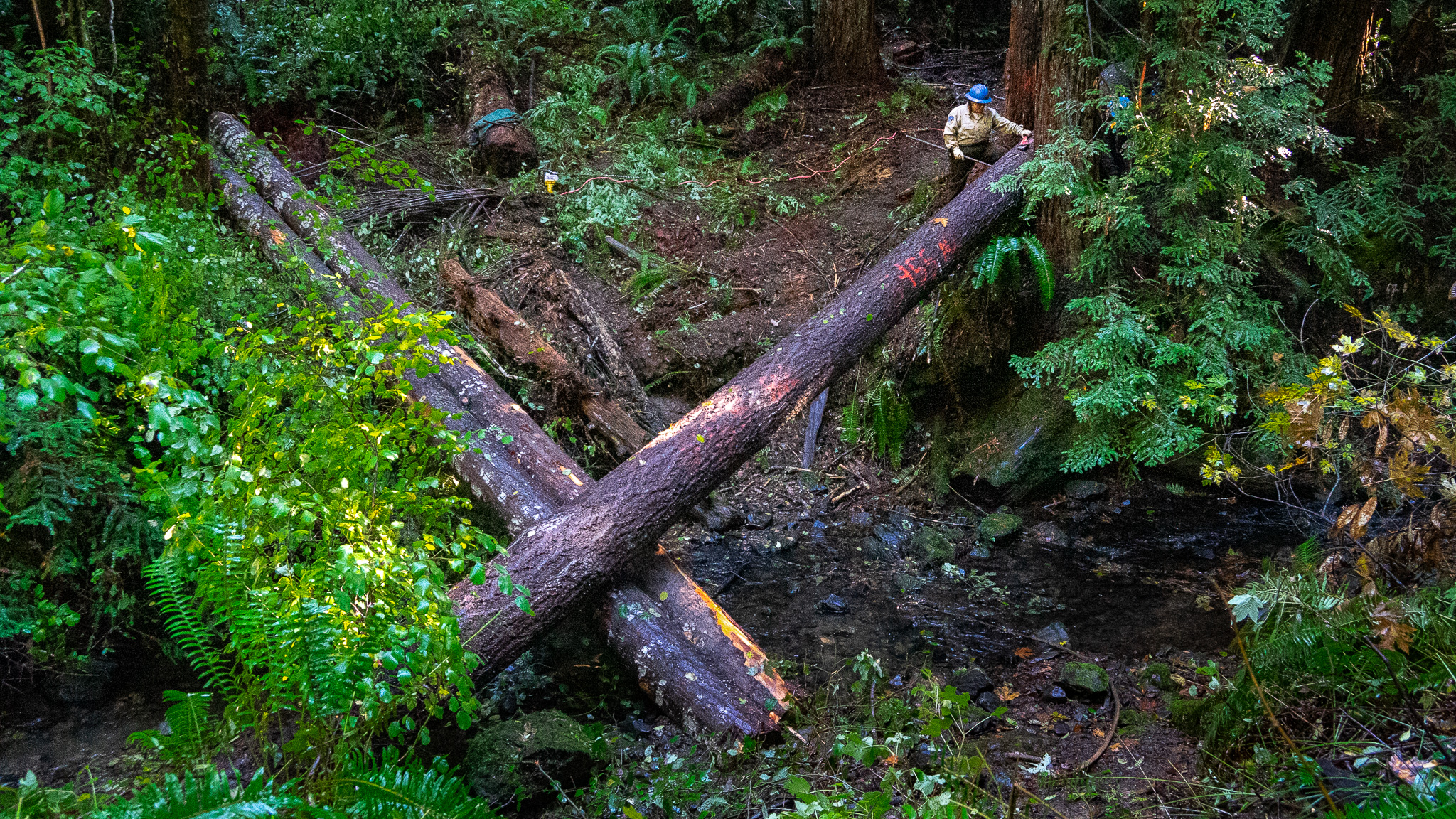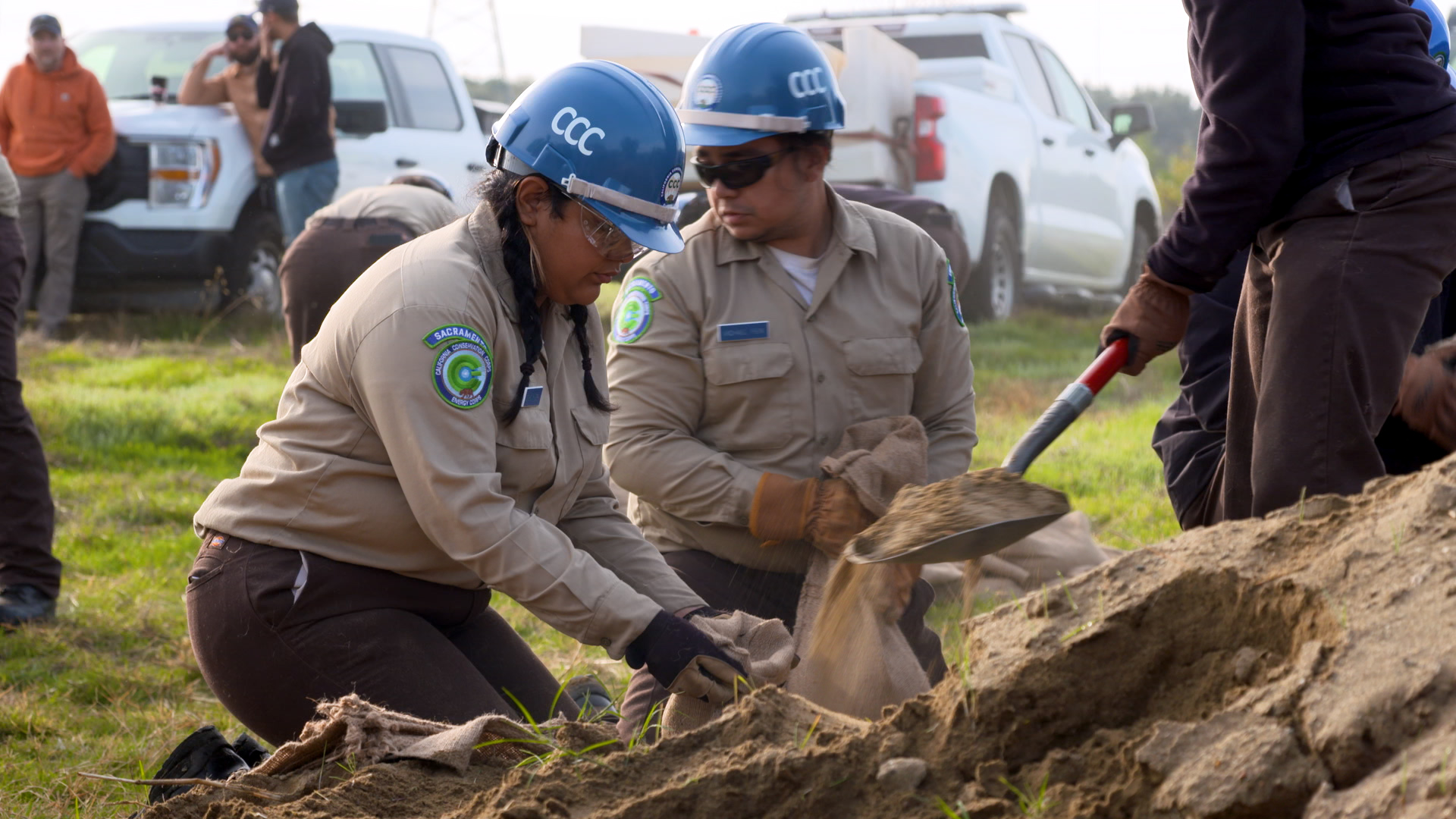“I’m out in the middle of the woods doing stuff that most people don’t get to do, saving fish,” said Corpsmember Alexandra Panarra. “It’s different. It’s unique. Nobody else does it.”
Alex and her crew spent weeks at a time camping deep in the forests of Mendocino County shouting out terms like grip, slack, choke, sling, and more. It’s all in the name of saving endangered and threatened Coho Salmon. And the Corpsmembers do it, by placing thousand-pound logs in local creeks and rivers.
Corpsmembers learn hands-on the intricacies of using specialized equipment, while challenging their minds and bodies to stay patient through the process. The end result, after water levels rise and recede, will be safe pools of water for the fish to rest and spawn. Salmon Restoration Projects like this, with no machinery involved, are unique to the CCC.
“Sometimes it’s hard, but honestly, it’s really nice,” Alex says of her experience. “You realize how special all of this is, to be a part of helping a species you know is endangered.”


